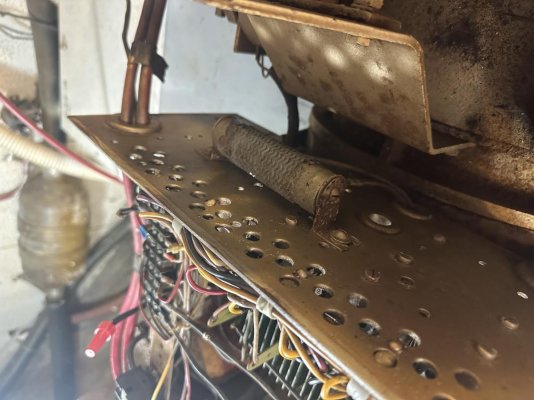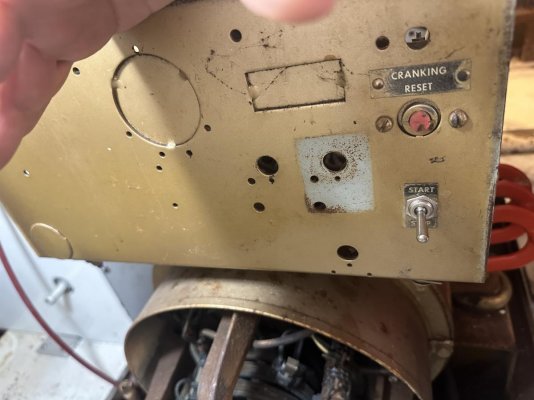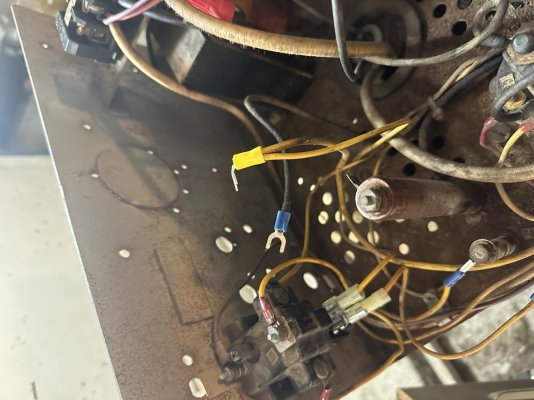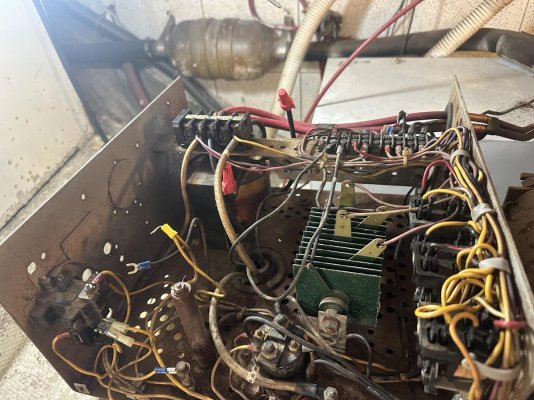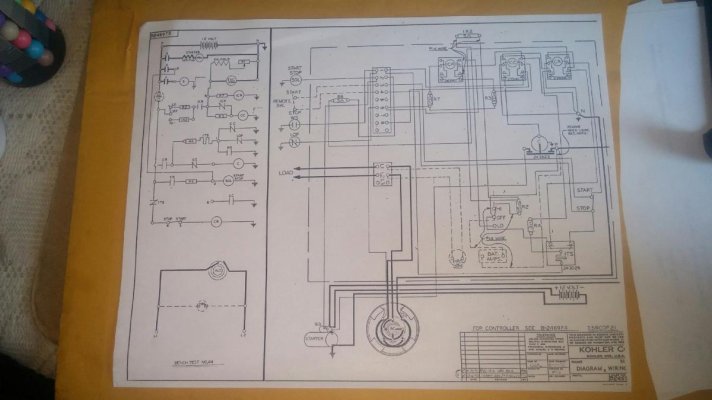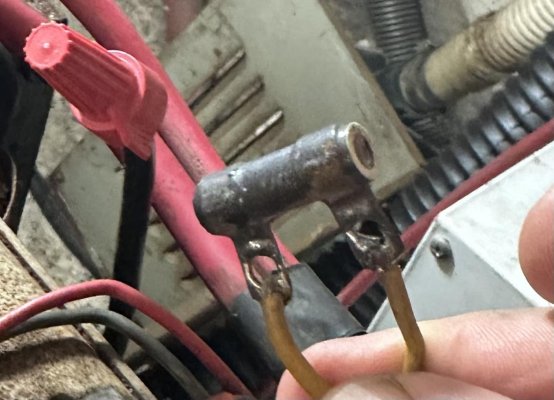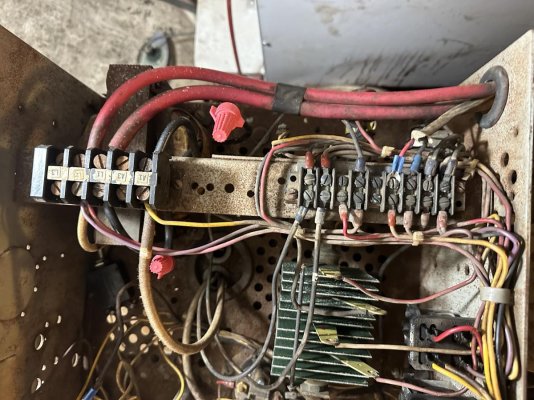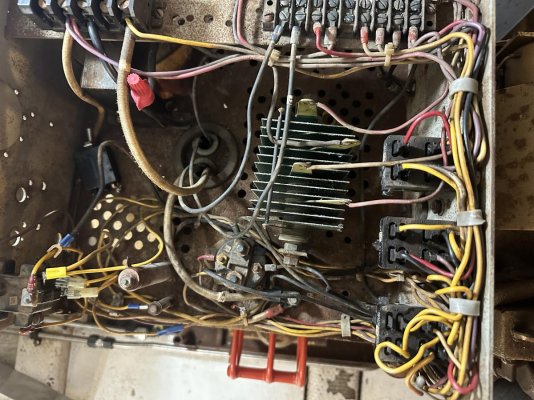I have a 1976 DeFever trawler with an original Kohler 10kw Generator. Here are the specs:
Model: 10ROP23
Controller: D-268923
Motor: Perkins 4.107
The engine starts and runs. Oil pressure and temp sensors work properly but do not have AC voltage. Generator sat for 7 years on the hard so I figured the field needed to be flashed. Check brushes connections, relays and flashed field. Still no voltage. Generator trips after running for 30 seconds when overcrank breaker pops due to no AC voltage. Upon inspection it appears there is something missing in the controller. There are two wires not attached to anything and an empty hole where it looked like a switch and plate were attached. Can't find a wiring diagram to figure out what is missing or where to connect the leads. The yellow wire runs back to the 1CR relay and the black wire runs to what I think is either a resistor or diode on the outside of the controller. The lead off the diode/resistor runs back into the controller and is attached to the ground post by the over crank trip. I have attached pictures of the two leads, controller. The two capped wires were off the A3 lead of the transformer. One was attached to the A1 terminal and the other was attached to the L1 terminal along with the output of the A1 lead. There is no A3 lead off the generator. Appreciate any assistance.
Model: 10ROP23
Controller: D-268923
Motor: Perkins 4.107
The engine starts and runs. Oil pressure and temp sensors work properly but do not have AC voltage. Generator sat for 7 years on the hard so I figured the field needed to be flashed. Check brushes connections, relays and flashed field. Still no voltage. Generator trips after running for 30 seconds when overcrank breaker pops due to no AC voltage. Upon inspection it appears there is something missing in the controller. There are two wires not attached to anything and an empty hole where it looked like a switch and plate were attached. Can't find a wiring diagram to figure out what is missing or where to connect the leads. The yellow wire runs back to the 1CR relay and the black wire runs to what I think is either a resistor or diode on the outside of the controller. The lead off the diode/resistor runs back into the controller and is attached to the ground post by the over crank trip. I have attached pictures of the two leads, controller. The two capped wires were off the A3 lead of the transformer. One was attached to the A1 terminal and the other was attached to the L1 terminal along with the output of the A1 lead. There is no A3 lead off the generator. Appreciate any assistance.

